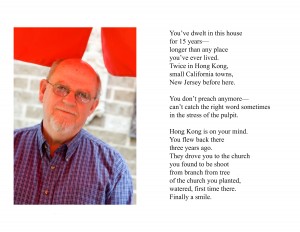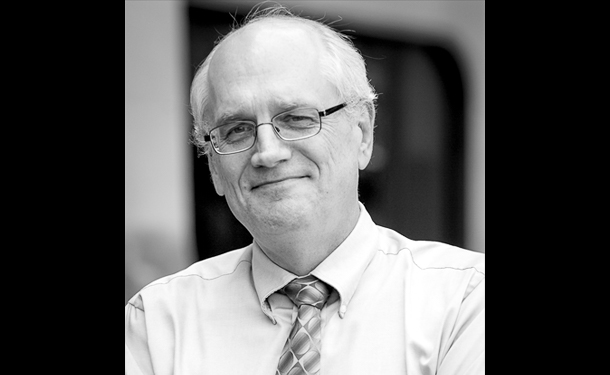Contract, pump, relax, fill. The heart takes blood in, then pumps it back out through the body, with life in each heartbeat.
Joseph Gascho notices these patterns in his work as a cardiologist at Penn State University’s Milton S. Hershey (Pa.) Medical Center. He also notices them in his passion for art, weaving the two fields together seamlessly.
“There is a medical term called diastole,” Gascho said. “It’s the phase of a heart cycle when the heart relaxes and blood is coming in. It’s a metaphor for me of what we take in, and it’s really important what we take in, because that then determines what goes out.”

Two of Gascho’s primary outlets include poetry and photography, including a photo collection he titled “Diastole.” Other works include the photo series “Flowers,” “Leaves,” and “Sky,” as well as a collection of echocardiogram-inspired poetry titled “Echo Poems” and a 2014 series of photos on hospital support personnel.
Gascho will share from his work at two events during Eastern Mennonite University’s Homecoming Weekend Oct. 9-10. The first will be a gallery showing and poetry recital at 8 p.m. Friday, Oct. 9, followed by musical guests Emulate in the University Commons’ Common Grounds coffeehouse. The second will be a more medically oriented Suter Science Seminar presentation at 9 a.m. Saturday, Oct. 10, in Science Center 106.
‘Ears and eyes open’
In both presentations, Gascho will share how he tries to open people to new perspectives.
“To me, seeing is a really, really big thing,” Gascho says. “One of my favorite biblical passages is the Emmaus Road story, where the disciples’ eyes are opened with the breaking of bread. As a physician, I try to have my ears and my eyes open not just for physical signs or for abnormal sounds from the stethoscope but also trying to take in something about the patient, what makes the patient tick.
“So what I hope for in my art is that people would see things in different ways—to see a patient differently or understand something about themselves, about medicine, healing, et cetera, in a different way. When we see things in a different way, it’s kind of an ‘a-ha’ moment, an epiphany, and we can do things differently. We tend to make the most changes when we have those moments. That’s what I hope a photograph or a poem can be.”

One of Gascho’s projects—on permanent display at Hershey—is titled “Patient Portraits,” a series of 50 patient photographs that contain abbreviated, cryptic notes about the patients’ medical conditions but also show their humanity. Most of them are long-time patients, and Gascho says they have been glad to assist.
“Ninety-five percent are delighted to have their pictures taken,” he says. “My point is to show they are more than just patients; they’re people, as well.”
Promoting a holistic approach to medicine
Gascho says that ethos is embedded in the work of Hershey Medical Center. While he is a professor of medicine and teaches about cardiology, he also teaches in the humanities and tries to introduce students to other aspects of medicine—the “non-scientific but important side.” He says that balance is a “real strength” of Hershey, which was one of the first schools to advance that holistic approach.
Eastern Mennonite also provided some of the foundation for Gascho’s work. He graduated from Eastern Mennonite High School (EMHS) and later spent his senior year of college in Harrisonburg following two years as a conscientious objector at Lankenau Hospital just outside of Philadelphia, where he took classes while serving as a medical research “guinea pig.”
He mentions chemistry professor emeritus Glenn Kauffman as a particular influence, someone who knew and taught science well but also built his own harpsichord and appreciated music and art. Gascho’s parents, Alvin and Irene, also worked at EMU. His father, a former pastor, became a maintenance worker so his son could attend EMHS.
Gascho says he will likely share poems about his father during the Homecoming Weekend visit, along with medicine-themed poems, some of his “Echo Poems,” and more—expect “a variety of things,” he says.
